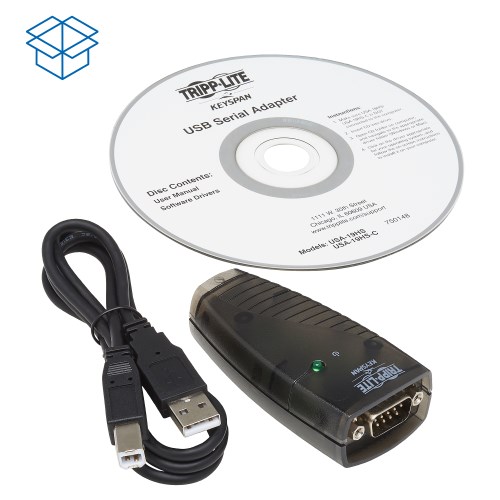

- #Keyspan driver for mac mac os x#
- #Keyspan driver for mac install#
- #Keyspan driver for mac serial#
- #Keyspan driver for mac drivers#
- #Keyspan driver for mac download#
Generally, hitting should cause a response, or should 're-draw' the screen.
#Keyspan driver for mac serial#
With handshaking set to software ( xon/xoff) or none, which covers most devices, serial data communication needs just 3 wires: RXD (2), TXD (3), and GND (5). Rectify this with: sudo chflags hidden /opt Connecting Note, the minicom installer creates /opt, and its not hidden in the OS X finder. Open a new window for this change to take effect. (Terminal Preferences ► Settings ► Window). HINT: Change your OS X terminal window size to 80x25 (1 line more) so you can see the bottom Minicom status bar. Press CTRL-A Z for a Command Summary, and help on special keys. In minicom, commands can be called by CTRL-A, for example, change your serial port settings with CTRL-A P In the example below, the serial device is /dev/cu.usbserial: Your serial interface device name is found with ls /dev/cu.* (as shown above).Īlways launch minicom, with your selected serial adapter plugged in and available to avoid an error. Then, Save setup as dfl (default) and Exit. Run minicom -s first to configure your serial interface device name, and other options. Add the following line to the bottom of the file: /opt/minicom/2.2/bin, save and exit - then relaunch the terminal.Then manually edit your $PATH with sudo nano /private/etc/paths.
#Keyspan driver for mac download#
Download and run the minicom 2.2 package installer.Minicom supports VT100 emulation, which means it sorta kinda works with Meridian Mail (Function keys: fn + f-key).
#Keyspan driver for mac install#
(use 'enter' or 'space' to scroll, and 'q' to quit).Īlternatively, if you'd like a few more features, and a retro feel, you can install minicom 2.2. Type man screen in Terminal for further information on screen. To quit the screen app, type CTRL-A, then CTRL-\.Then type: screen /dev/cu.usbserial 9600 (in this example).With the USB-Serial adapter plugged in, you'll get a list, including something like this: Screen lacks some features, but it does include VT100/ANSI terminal emulation, and can be extremely useful.
#Keyspan driver for mac mac os x#
It's not actually necessary to download an install extra software, as you can use the Mac OS X built in Terminal and screen. Note: If you can't find a driver for your adapter (eg, Belkin), try Serial which has built-in support for many USB-Serial devices.

dev/cu.* devices do not assert DCD, so they will always connect (respond or succeed) immediately. The technical difference is that /dev/tty.* devices will wait (or listen) for DCD (data-carrier-detect), eg, someone calling in, before responding. We want to call-out from our Mac, so /dev/cu.* is the correct device to use.

So, what's the difference? Well, TTY devices are for calling into UNIX systems, whereas CU (Call-Up) devices are for calling out from them (eg, modems). You might notice that each serial device shows up twice in /dev, once as a tty.* and once as a cu.*. Note: Check your adapter works after an OS Update, as you may have to re-install the driver. Select this port name in a terminal program. This indicates the USB-Serial driver is working. dev/cu.Bluetooth-PDA-Sync /dev/cu.usbserial dev/cu.Bluetooth-Modem /dev/cu.iPhone-WirelessiAP
#Keyspan driver for mac drivers#



 0 kommentar(er)
0 kommentar(er)
